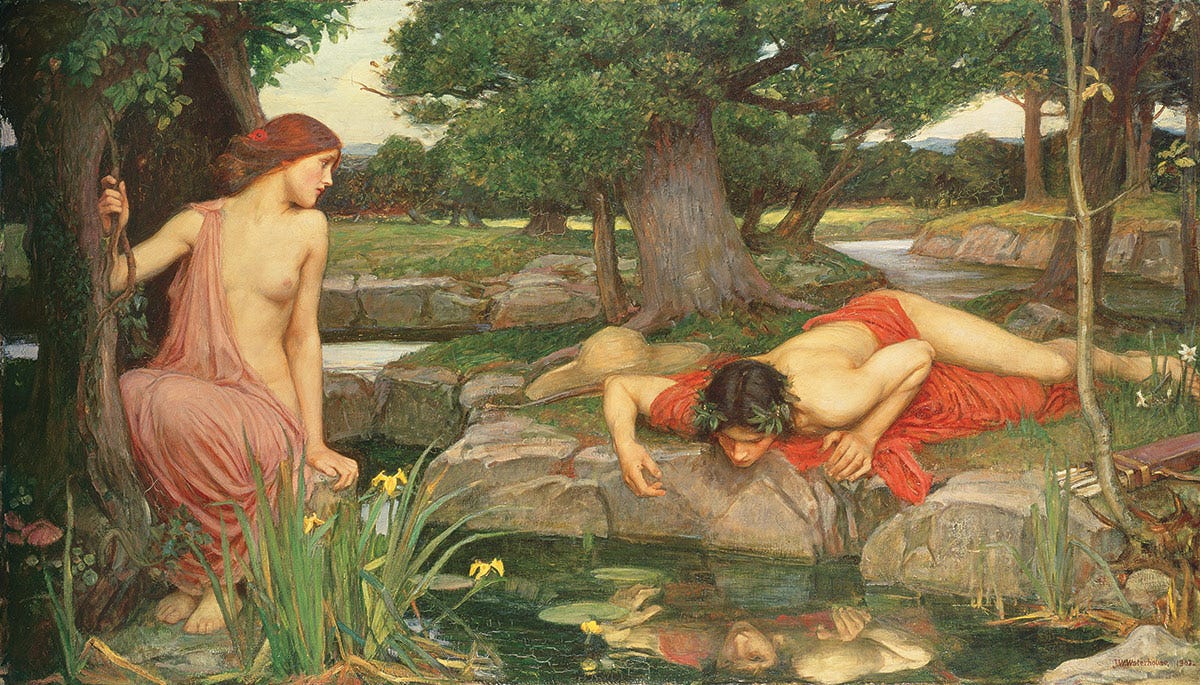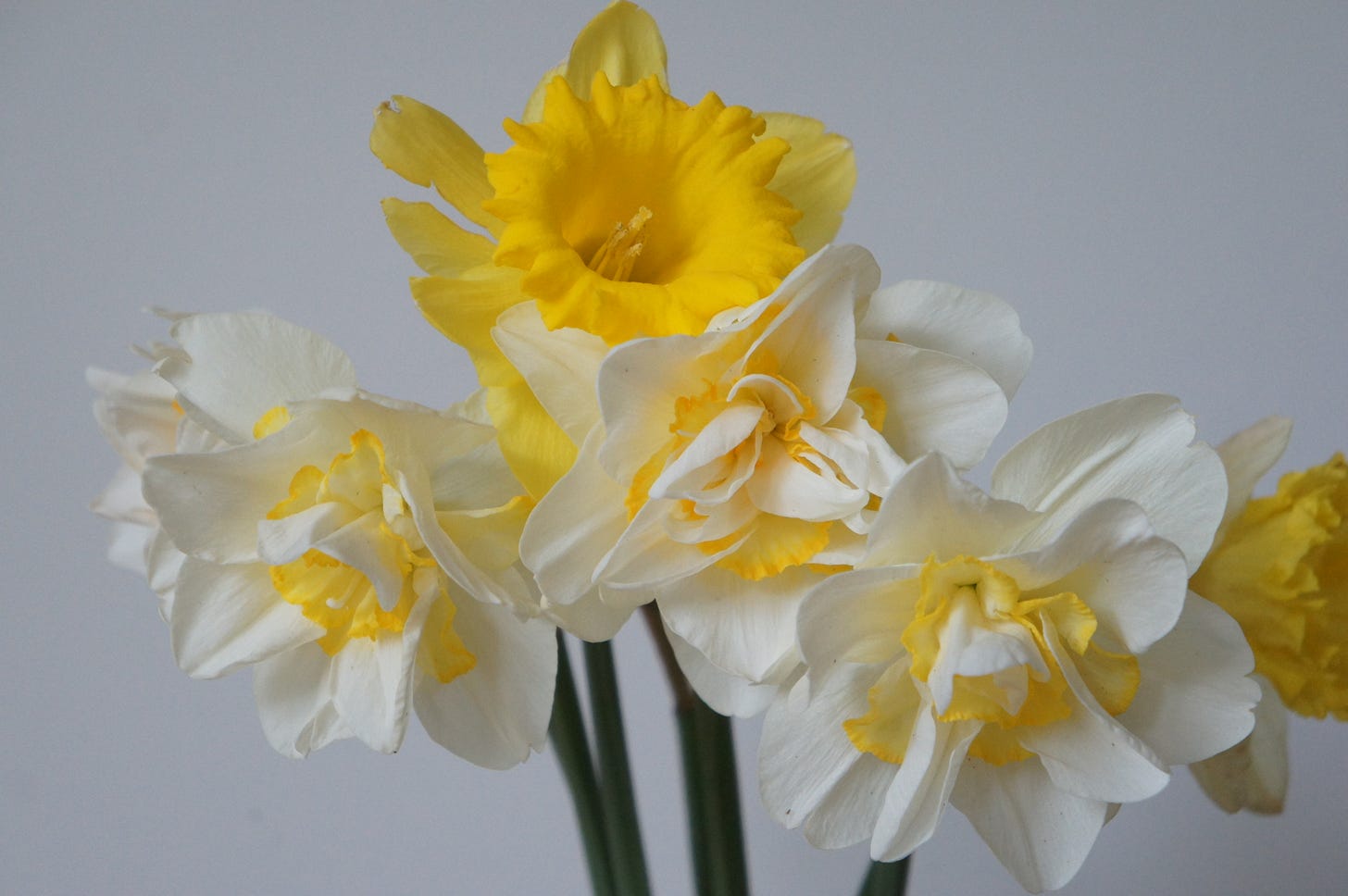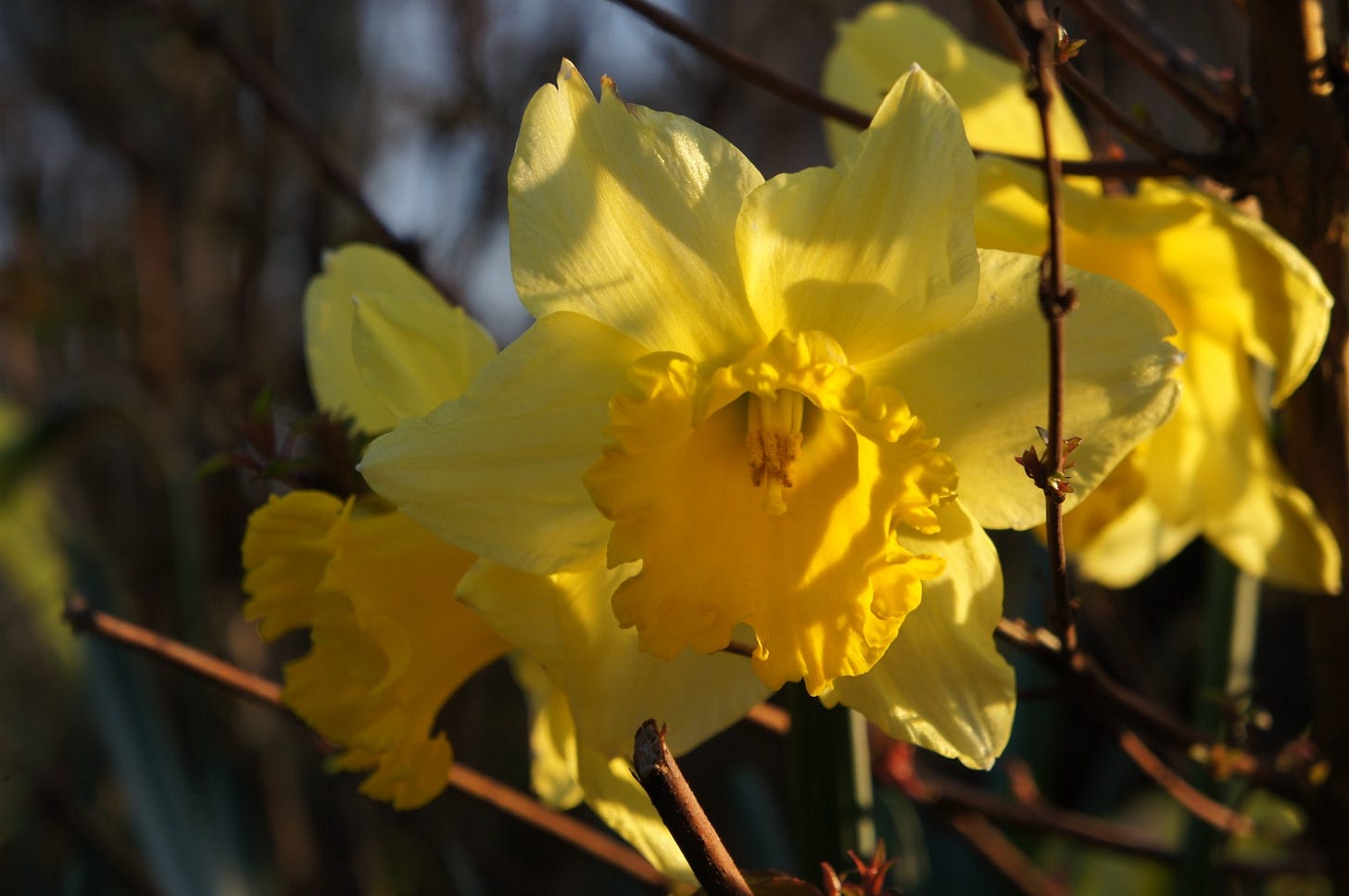As I’m sitting here, writing this, the golden light of Autumn streams through the trees, creating intricate lace patterns in the drying fading undergrowth. You’d think that the furthest thing from my mind would be Spring. But here, my friend, you’re wrong. It’s the perfect time to start thinking about Spring gardening, more specifically about daffodils.
I understand, it’s a little unexpected. You’d normally see articles galore about daffodils in March, but I have some beef with those writers: why would you parade their gaudy loveliness in front of me when it’s too late to plant them? How cruel.
Daffodils have been gripping any passing adorer and burrowing themselves in our stories for thousands of years. In antiquity, there are several origin myths for daffodils, also known by another name: narcissus. Both the Romans and the Ancient Greeks have stories about this flashy flower. In ancient greek mythology, Persephone was kidnapped by Hades while plucking narcissuses, and (because of this? despite this?) they grew along the banks of the river Styx as well as greeted the newly dead in the meadows of Asphodel. Thus the flowers symbolically became intertwined with Death.
Roman poet Ovid’s telling of the birth of the Narcissus flower is perhaps the most known. In the third book of his epic Metamorphoses l, there was a beautiful young man named Narcissus. Many loved him and his beauty, but he loved no one. Wherever Narcissus went, he was followed by a wake of destroyed hearts and unrequited love. Many women, nymphs, and men were absolutely besotted with him, and yet none caught his eye. One young man, Ameinias, really shouldn’t have been disregarded by Narcissus. Ameinias pleaded to the goddess of revenge, Nemesis, after having been callously ignored by Narcissus. Nemesis was more than happy to oblige (vengeance, after all, is her schtick) and cursed Narcissus to never be loved by the one he fell in love with. As I’m sure you can predict, on one fated day, he did fall in love. Surely, it must have been a great beauty to have finally captured his attention? Ah, but here is where you’re wrong… sort of. He’d passed a pool of water, glimpsed his reflection and wham! bam! Love at first sight. You read that right, he fell in love with himself. I’m sure you can guess why the name Narcissus feels familiar. However, just as Nemesis proclaimed, his reflection never loved him back. For how could it? It wasn’t real, but nobody seemed to have told Narcissus that. So consumed by his desire for himself, he didn’t eat, he didn’t drink, all he did was stare at himself. He was a man obsessed, and fatally so. Some say he wasted away, others say he drowned in his own reflection. Where Narcissus’ body perished, the namesake yellow flowers bloomed and he lived on in a sort of twisted immortality, forever trapped in a one-sided love.
Note: to be fully transparent, there’s a different version by Ovid relating to Narcissus. One is the one written above, and another involved Echo, a beautiful nymph who wasted away in unrequited love for Narcissus until nothing but her voice remained. For the sake of simplicity, I left out Echo. And because the myths of antiquity seem to like being confusing and obtuse, there are more versions than just Ovid’s retelling, including one involving Artemis.

These ancient tales, with all their depth and symbolism, make me appreciate the daffodil even more. While their roots are entwined with mythology, in my own garden, they represent something simpler yet equally profound: a burst of life in the bleakness and stillness of winter. And so, each year, as I plant them, I feel a connection not only to nature but also to the enduring stories they carry.
In an effort to ward off the quiet melancholy of late Winter, I’ll be planting an array of daffodils this Autumn, each one a promise of brightness and renewal in the stillness to come. I’ll be planting a pastel mix of Gamble, Pink Charm, Doll Baby, as well as a citrus mix of Ladea, Tickled Pinkeen, Eline, Jaffauna, Delnashaugh, and Palmares. The aim is to have a good mixture between different shades and petal types gives texture to the garden, giving the eye more to admire.
A few things to keep in mind when you plant your bulbs:
Try to plant when the weather is cool but before the first frost. I haven’t always kept to that but I’ve been extraordinarily lucky. I recommend planting them sometime between September and November, depending on your location.
Funnily enough considering their association with Death, daffodil bulbs thrive on bone meal. When planting them, sprinkle some bone meal with them before covering with dirt.
When they’re done blooming in Spring, don’t cut them back. The photosynthesis happening in the leaves feeds the bulbs, which means better and more flowers the next year. Wrap up the green leaves if need be, but leave them until they’re yellowing.
So as the longer nights quickly approach, planting daffodil bulbs is my way of holding on to hope, a small promise that brighter days will return. Despite the ancient myths of Narcissus or their connection to Death, daffodils remind me that even in the quietest seasons, life is always preparing for its next awakening. As I tuck each bulb into the soil, I’m not just planting flowers—I'm planting anticipation, joy, and a little bit of springtime magic to carry me through the colder months.







Cleo. This is a gorgeous post. I love the end. I write about storytelling and gardening as well. You might like this. https://open.substack.com/pub/pocketfulofprose/p/im-letting-go-of-my-garden?r=qqbxq&utm_campaign=post&utm_medium=web